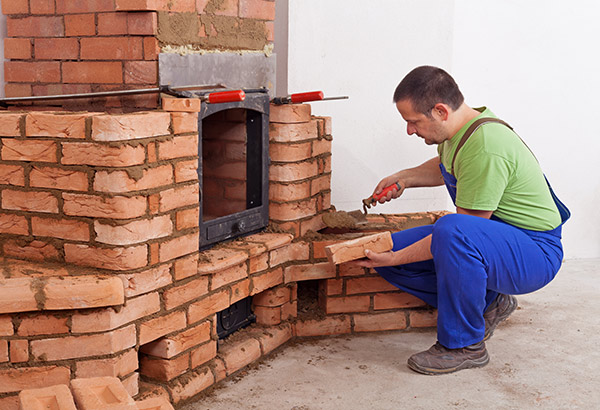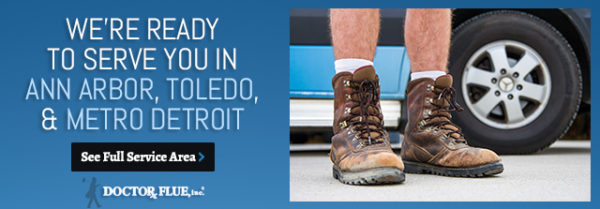
Thinking about installing or upgrading a fireplace? Whether you are planning a fireplace for indoors or outdoors, gas or wood-burning, there are fireplace safety codes that need to be followed. These codes are developed to ensure the safety of your home, property, family and friends throughout the years of fireplace usage.
Who Promotes the Standard for Fireplace Safety Codes?
When it comes to standards for fireplace safety codes, The National Fire Protection Association (NFPA), “is a global self-funded nonprofit organization, established in 1896, devoted to eliminating death, injury, property and economic loss due to fire, electrical and related hazards.” This organization provides 300 safety codes and standards which are used worldwide.
They have criteria for all types of fire hazards from design and building to installation and service. They have established codes for fire-burning appliances as well as electrical safety. With regard to fireplace safety codes, most of the key codes regarding wood or gas fireplaces come from the NFPA Standard 211.
The NFPA also makes great efforts to educate the public. Two of their most notable avenues to raise public awareness are via the promotion of Fire Prevention Week and through their official mascot, Sparky the Fire Dog.
Fireplace professionals like Doctor Flue rely on the guidelines and education of organizations like the NFPA, as well as the Chimney Safety Institute of America (CSIA), and the National Fireplace Institute (NFI) to ensure rigorous and consistent fireplace safety codes and standards across all of our work.
Are Fireplace Safety Codes Important?
Absolutely! Where there is a fireplace, there is a potential for incidents and accidents. Fireplace safety codes are designed to reduce or eliminate issues such as:
- Chimney Fire – A fire can originate in the chimney or flue and be the result of excessive heat or igniting of creosote deposits.
- Carbon Monoxide Poisoning – A commonly occurring fireplace byproduct is carbon monoxide which can cause illness or death if it is not properly vented.
- Proximity Fires – Mantels or other objects near the fireplace may become fire hazards if they are not installed following NFPA standards.
The NFPA fireplace safety codes are designed as an industry standard of safety. When anyone is installing or modifying a fireplace whether it is gas or wood-burning, they should refer to and follow these codes. However, these codes are constantly being updated, so fireplace construction or repair - even for outdoor fireplaces - is best left to professionals who stay current on code changes.
What Safety Codes Affect Installing a New Fireplace?
The 2019 NFPA 211 Standard for Chimneys, Fireplaces, Vents, and Solid Fuel-Burning Appliances has 68 pages of codes. When installing or maintaining a fireplace, a few of the critical points to consider are:
Overhead Masonry Support
One requirement is that, “Masonry over a fireplace opening shall be supported by a lintel of noncombustible material.” (NFPA 211 section 11.2.1.8) This means that any overhead masonry must be supported by a horizontal supporting beam, and that the beam must be composed of non-combustible material.
This is an important code because while it is very common when building portions of a fireplace - like the opening of the firebox - to help support the masonry using a lintel, if combustible materials are used, the lintel can ignite due to excessive heat from the fireplace. This is true even when the lintel is encased by brick.
Woodwork Distancing
Just like social distancing can help prevent the spread of viruses, woodwork distancing can help prevent risk of fire. The NFPA 211 fireplace safety code states in section 11.2.5.3, “Woodwork, such as wood trim, mantels, and other combustible material, shall not be placed within 6 inches of a fireplace opening.”
This may appear to be stating the obvious; however, this 6-inch distance between the opening of the fireplace and decorative items such as the mantel is critical for fire safety.
A mantel that isn’t directly over the flames may appear a safe distance away from the fireplace to a DIYer, but combustion can occur due to the proximity of woodwork to the fireplace’s heat source. This close proximity may not seem dangerous to the untrained eye, but it could quickly lead to a house fire.
Factory-Built Fireplaces Shifting
It may seem like a no-brainer to attempt a DIY installation of a fireplace insert. After all, they are manufactured in a factory so what could go wrong. To ensure the safe and proper installation, the NFPA also provides fireplace safety code standards for installing gas or wood fireplace inserts.
Because shifting can occur when a factory-built fireplace is installed, which could impact the safe operation and function of your fireplace, the NFPA fireplace safety code requires that all factory-built fireplaces be secured to the floor or structural framing of the building to be compliant.
The NFPA codebook goes into detail on fireplace safety codes for everything from chimneys and fireplaces to vents and solid fuel-burning appliances. These are just a few examples. The full NFPA codebook is available to purchase but the NFPA also provides free online access to users who want to educate themselves on all fire safety codesHYPERLINK "https://www.nfpa.org/codes-and-standards/all-codes-and-standards/list-of-codes-and-standards/detail?code=211"!
How Do I Know If My Fireplace is Safe?
There is much more to fireplace safety than meets the eye. There are in-depth fireplace safety codes and regulations which makes learning everything you would need to know to inspect your own fireplace yourself rather difficult.
The best option is hiring a professional chimney sweep with certification through the NFPA, NFI, or CSIA. This way, you ensure a reliable chimney inspection. Whether you need a chimney inspection, chimney cleaning, or are looking for fireplace installations and upgrades, when it comes to protecting your home, it’s best to leave it to professionals who know the fireplace safety codes.
Schedule an Inspection of Your Chimney Today!
Our CSIA Certified Chimney Sweeps will inspect your fireplace and chimney to make sure your chimney liner is in excellent condition, or to schedule an appointment to install a new liner if necessary! Contact us today! We’ll get you set up right away so you can have peace of mind.
Call Us: 1-800-438-3583
Email Us: office@drflue.com
Office Hours: Mon-Fri: 8am-4pm
Connect with Doctor Flue on Social Media

